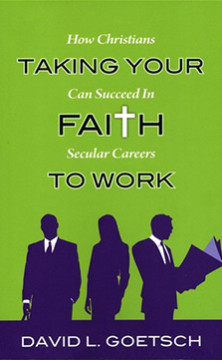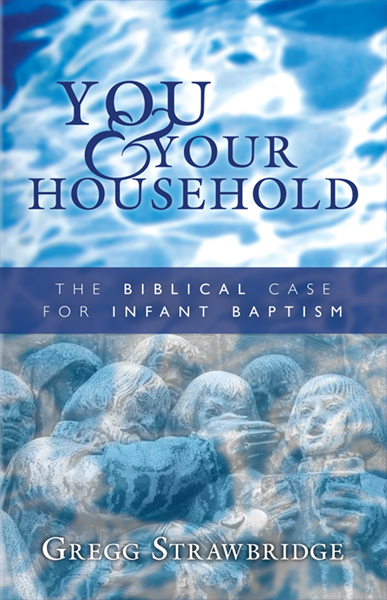John’s Gospel opens with the unmistakable echo of Genesis 1:1: “In the beginning … God.” He fills that out a bit more than Moses, but there is no doubt that John intends to write a new Genesis. The clear allusion in John’s opening words invites us to look for patterns that parallel and retell the story of creation around the Word made flesh. John makes it fairly easy for us.
In the first eleven chapters of his Gospel, John records seven signs Jesus performed. He records these signs so that the reader or hearer might believe that Jesus is the Christ, the Son of God, and believing might have life in his name (Jn 20:30-31). John shapes his telling of the story of Jesus around these signs.
Signs are not inert pointers to something else. They are not like our road signs, for instance, that tell us the law but have no power to enforce it. Signs in Scripture are what we call miracles, God’s extraordinary providence; that is, this isn’t the way God works ordinarily on a day-to-day basis. Signs are God’s acts to save his people and destroy his enemies. When Moses was sent to Pharaoh, he was sent to perform signs and wonders that would lead to the deliverance of the children of Israel and the destruction of Egypt.
Jesus’ signs are for the same purpose, but the scale of his work is greater than that of Moses. What God did through Moses in North Africa, Jesus is doing for the entire created order.
As the world begins in water, so John’s new Genesis begins in water with the Spirit hovering and the first light driving back the darkness. After the Prologue (Jn 1:1-18), water is everywhere, surrounding the first sign of Jesus turning water to wine (Jn 2:1-11). John the Baptizer is baptizing. Jesus is baptized, and the Spirit hovers over him. Jesus tells Nicodemus that the new birth is through water and Spirit (Jn 3:1-21). Baptisms appear again at the end of chapter 3, and Jesus speaks with a woman at a well in chapter 4.
Jesus’ first sign is to take the water of the old creation and bring it to maturity in the form of wine. Wine is mature water, water assimilated into the ground, vine, and grape and then extracted and aged/matured. Jesus is making a new creation that will be the mature creation God intended. This is the first light of Jesus’ glory (Jn 2:11).
On the second day of creation, God placed a firmament he called “heaven” between the waters below and the waters above. The heaven of heavens is the place of God’s throne, his rule. The firmament heaven will eventually have rulers that govern times and seasons (Gen 1:14-18). A ruler’s son is healed as the second sign (Jn 4:46-54). The sons of Adam are sin-sick and unable to rule as God intended. Jesus is healing the firmament dwellers.
The third sign follows on the heels of the second sign with a Jewish man at the Pool of Bethesda who desires to be healed by going into the pool after it has been stirred by the angel and emerging with a new life. The third day of creation is when land emerged from the water, and vegetation appeared. Jesus is the one who has the authority to raise “the land,” men, from the abyss of death into resurrection (Jn 5:19-47).
Jesus feeding the five thousand is the fourth recorded sign (Jn 6:1-15). On the fourth day of creation, God placed the sun, moon, and stars in the firmament to rule. When Jesus provides bread as Solomon did for the nations and as God did in the wilderness, the people want to make him king (Jn 6:15), a star in the firmament-heaven. He will be there, but not yet.
The fifth sign is connected to the fourth because the people’s actions cause Jesus to withdraw. The disciples get into a boat on the sea that becomes tumultuous, and Jesus comes walking on the sea. On the fifth day of creation, God created swarms of swarming sea creatures over which man was to have dominion (Gen 1:28; Ps 8). The sea of the old creation swallows up man in death, but Jesus subdues it.
On the sixth day of the week, God made man in his image to rule as God rules. The refrain of God’s judgments in Genesis 1 is, “and God saw that it was good.” The eyes are instruments of judgment, discerning between good and evil. In John 9, we meet a man born blind who declares of himself, “I am the man” (Jn 9:9). He is the old Adam left without the ability to judge. Jesus heals him so that he can judge as he was created to do.
The Sabbath day was a day of rest and rejoicing. Sin turned into a day of mourning. Lazarus dies, and Jesus weeps. Raising Lazarus from the dead is the seventh sign. Jesus will turn the mourning of death-rest into the rejoicing of life-rest.
This entire week of signs anticipates the eighth sign that is homed in on in chapters 13—20. Jesus will be glorified through the cross and resurrection. He is crucified on the sixth day of the week, lies in the tomb on the Sabbath, and then is raised on the first day of the week, which is the eighth day in relation to the first week. Jesus re-creates the world in his work.
John’s Gospel structure is the message: Jesus has not come to give men individual private spiritual experiences as one religion among many; Jesus has come as the Creator and Re-creator of the world who defines and governs every aspect of the world’s existence. Pledge your allegiance to your Creator and King.
Read more

























